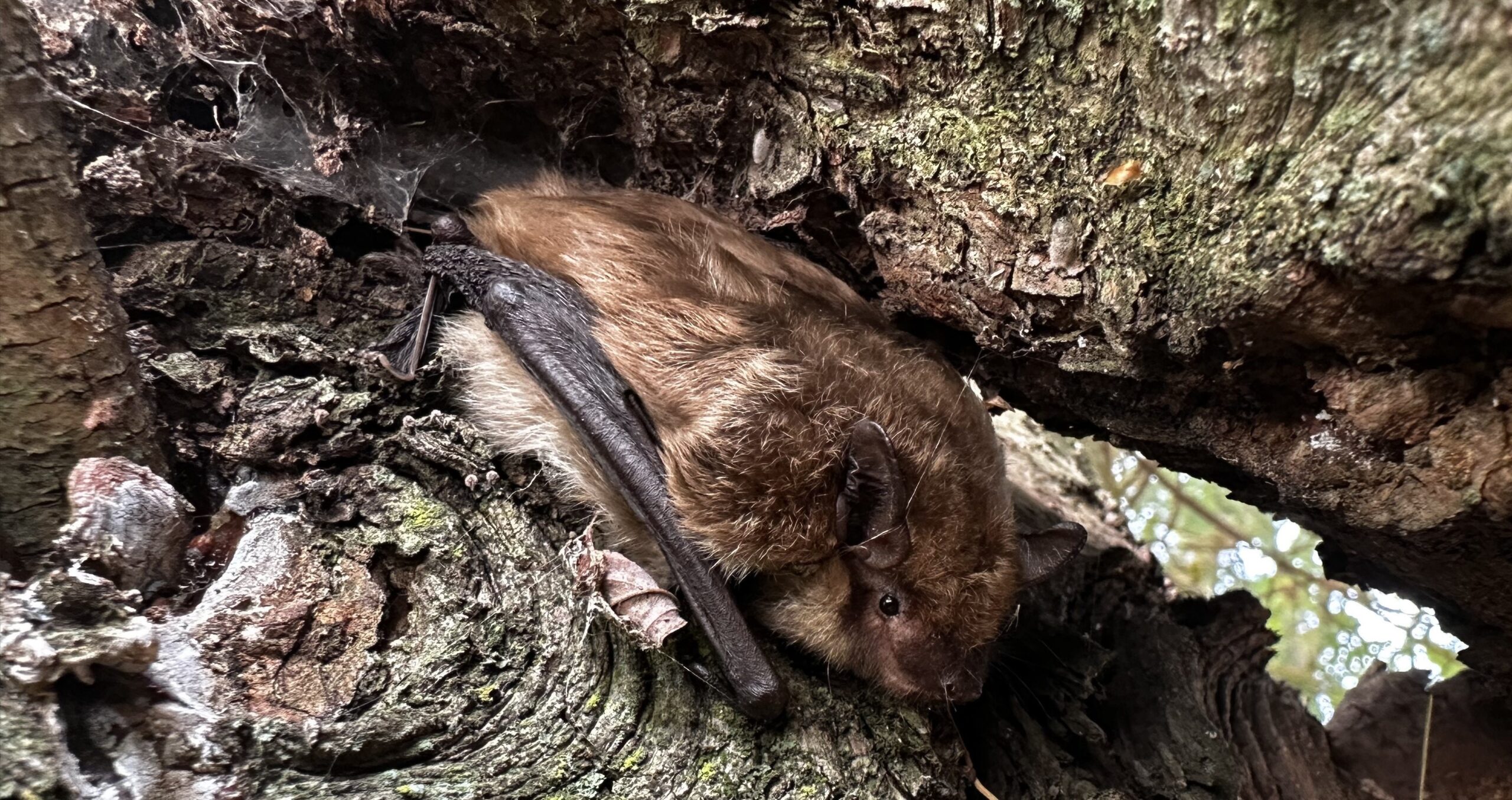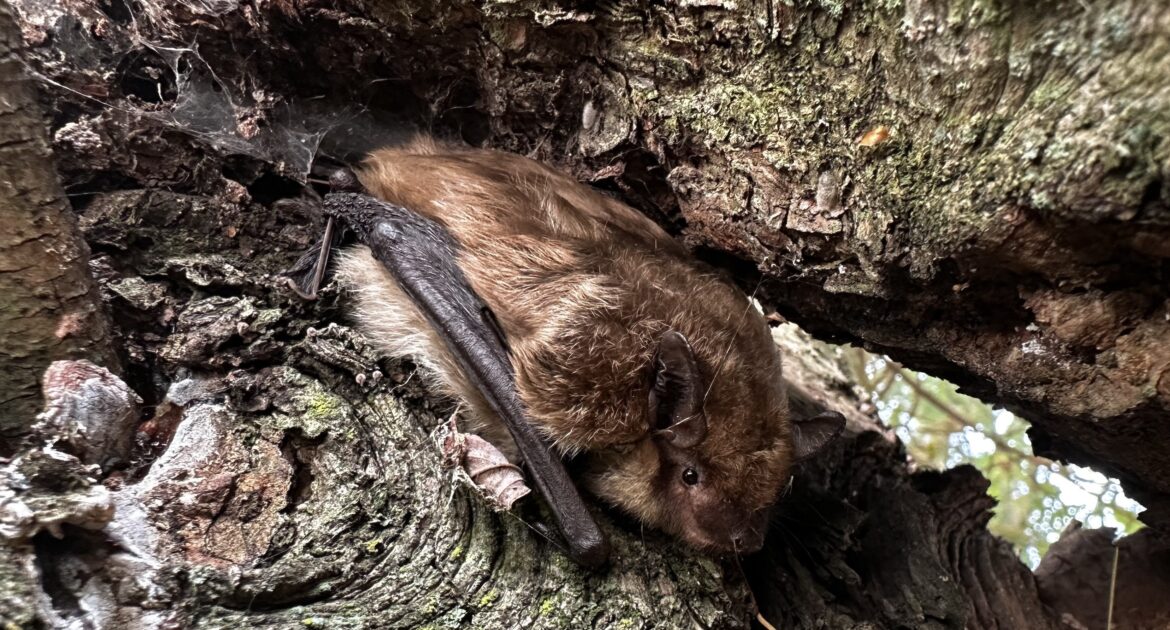Bats may not always be welcomed in your home, but they play a critical role in our ecosystem, especially here in Whitby, Ontario. From munching on insects to pollinating plants, they’re invaluable to nature’s balance. Unfortunately, these flying mammals face a life-threatening disease called White-Nose Syndrome (WNS).
White-Nose Syndrome has had a devastating impact on bat populations across North America, including right here in Ontario. This fungal disease spreads quickly through colonies, causing unusually high mortality rates that can wipe out up to 90% of a local population. As bat numbers drop, our local ecosystem feels the effects—fewer bats mean less natural control of insect pests and disruptions to pollination cycles, which ultimately impacts agriculture and the balance of nature in our communities.
This blog dives into FAQs about White-Nose Syndrome, why DIY bat removal is unsafe, and how Skedaddle Humane Wildlife Control in Whitby can assist with humane and effective solutions.
What Is White-Nose Syndrome?
White-Nose Syndrome is a fungal infection, scientifically termed Pseudogymnoascus destructans. This disease primarily affects bats during hibernation, targeting their delicate skin on the nose, wings, and ears. Named for the fluffy, white fungal growth it forms around the infected areas, White-Nose Syndrome disrupts a bat’s ability to survive the winter months.
While there is ongoing research, as of now, there is no cure for White-Nose Syndrome. Some natural bacterial defences have shown promise in slowing the fungus, but these solutions are not yet widely available for implementation.
Why Is White-Nose Syndrome Such a Grave Threat to Bats?
White-Nose Syndrome is especially dangerous for bats because of their slow reproduction rate. Most female bats produce just one pup per year, so population recovery is painstakingly slow. Here’s what makes this disease so devastating for their survival:
- Starvation During Hibernation: Bats infected with White-Nose Syndrome wake frequently from hibernation because the fungus triggers their immune system and metabolism. This leads to the rapid depletion of their fat reserves, which are critical for surviving the winter months.
- Severe Mortality Rates: Colonies affected by White-Nose Syndrome experience mortality rates between 70% to 90%. Some species have been brought to the brink of extinction.
- Secondary Complications: Even if a bat survives the winter, its immune system remains weakened. This leaves it vulnerable to other diseases or complications caused by damage to its wings and tissues.
Here in Whitby, where we’re lucky to have bats contributing to controlling pests and pollinating plants, these alarming statistics are a reminder of how critical it is to protect these animals.
How White-Nose Syndrome Spreads
White-Nose Syndrome originated in Europe and Asia, where local bat species developed resistance to the fungus over time. However, North American species have not adapted, leaving them vulnerable. The fungus spreads primarily in two ways:
- Bat-to-Bat Contact: Bats hibernate in tightly packed colonies to preserve heat during winter. This close contact facilitates the rapid spread of the fungus.
- Contaminated Environments: Caves and other hibernation sites can become contaminated. Human activity—such as cave exploration—has also been a vector for introducing and spreading the fungus across regions.
Preventing contamination is key to controlling its spread, and that applies even when bats end up in your home. Mishandling them can unintentionally cause harm to an already declining population.
DIY Bat Removal Is Unsafe and Ineffective
If bats have taken residence on your property, it may be tempting to address the problem yourself. DIY removal, however, is not just risky—it can lead to serious consequences for you and the bats. Here’s why professional removal is the safe and humane option you should always choose:
- Legal Ramifications: Many bat species in Ontario are protected under provincial and federal law due to their declining populations and ecological importance. Harmful removal practices could result in fines or other legal consequences.
- Health Risks: While bats themselves are rarely aggressive, they can carry diseases such as rabies. Attempting to remove bats without proper training increases the risk of exposure.
- Unintended Consequences: Most DIY methods fail to solve the root problem. Quick fixes can result in bats returning or causing greater damage to your property.
When you call on Skedaddle Humane Wildlife Control, we tailor our approach to prioritize both your safety and the well-being of these vital animals.
Trust Skedaddle for Humane Bat Removal
At Skedaddle Humane Wildlife Control, we’ve designed humane methods to remove and protect bats without causing harm. One of our primary tools is a one-way door system. These innovative devices allow bats to exit your home but prevent them from re-entering.
Here’s how the process works at Skedaddle Humane Wildlife Control in Whitby:
- Inspection: Our first step is thoroughly examining your home to determine how and where bats are entering. Common entry points include gaps in roofing, vents, or soffits.
- Humane Removal: Once we’ve located the entry points, we install one-way doors. This allows bats to fly out in search of food but prevents them from returning to roost.
- Sealing Entry Points: After confirming the bats are gone, we seal all potential entry points to ensure they can’t regain access to your home.
By using this approach, we help keep your home bat-free while ensuring these helpful creatures can continue to thrive in nearby natural habitats.
Why Bats Are Important to Whitby
While bats may not be a common sight during daylight hours, they work tirelessly at night to keep our ecosystem in balance. For example, big brown bats and little brown bats—which are both native to Ontario—consume thousands of insects, including mosquitoes, every evening. This natural pest control benefits agriculture, prevents the spread of insect-borne diseases, and reduces the need for chemical pesticides.
Here in Whitby, where we’re surrounded by stunning outdoor spaces like Lynde Shores Conservation Area and Heber Down Conservation Area, bats contribute to the health of our environment. By protecting them, we also sustain these beautiful areas for future generations.
Preventing Bat Infestations
While Skedaddle is always ready to assist with humane removal, there are steps Whitby homeowners can take to prevent bats from entering their homes in the first place. Consider the following practical tips:
- Inspect Your Home Regularly: Check for gaps, cracks, or holes in your roofline, vents, and windows. These small openings are often how bats gain entry.
- Install Vent Covers: Covering vents and chimneys with mesh or grates can block bats without disrupting airflow.
- Limit Bright Lights: Bats are drawn to areas with abundant insect activity. Reduce outdoor light sources, as they tend to attract insects and subsequently bats.
- Maintain Nearby Trees: Trim overhanging branches to ensure bats cannot use them as a bridge to enter your home.
Regular maintenance and vigilance can keep your home unappealing to bats while still allowing them to thrive in the wilderness around Whitby.
Skedaddle Humane Wildlife Control Offers Comprehensive Bat Solutions
Every home in Whitby is unique, which is why our team at Skedaddle Humane Wildlife Control tailors every action plan to meet your specific needs. Whether you live near Whitby’s charming waterfront or in a neighbourhood surrounded by historic architecture, our goal is to ensure a safe and humane solution for keeping bats out of your property.
We also go beyond removal by addressing potential vulnerabilities in your home structure. Our process ensures long-term peace of mind so you and your family can feel secure while helping protect bat populations in Ontario.
If you suspect bats have found their way into your home, reach out to us today. Together, we can make your living space safe and bat-free without causing harm to these vital creatures.
Safeguarding your home and local wildlife is part of what makes Whitby such a thriving community. At Skedaddle, we’re here to help you ensure both. Always choose humane, professional assistance for wildlife concerns and trust us to keep your family and property safe while protecting the natural world.




